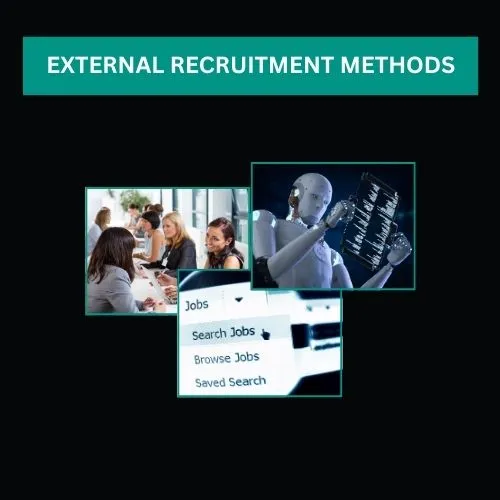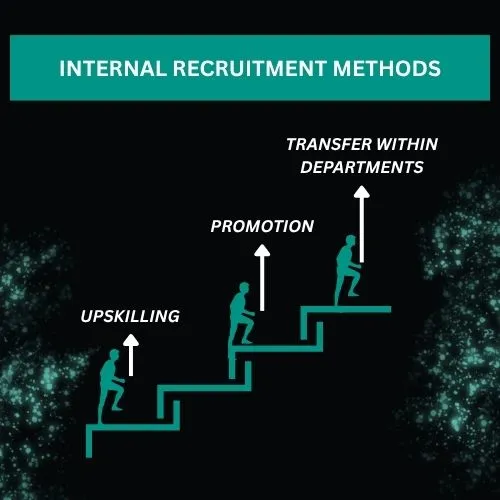As global economic conditions shift and emerging technologies disrupt traditional HR processes, businesses face growing challenges in attracting, hiring, and retaining top talent. With high turnover rates and rising competition for skilled professionals, it’s crucial for companies to adopt effective recruitment methods that align with both short-term hiring goals and long-term workforce strategies.
Below are some widely used and proven recruitment methods—both external and internal—that can help businesses build a strong talent pipeline and secure ideal candidates for key roles.
External Recruitment Methods
External recruitment opens access to a wider talent pool, allowing businesses to attract qualified professionals, fresh graduates, and experienced individuals outside the organisation.
1. Campus Recruiting
Campus recruiting is an excellent way to engage fresh talent. Companies visit universities, colleges, and training institutes to participate in job fairs, deliver employer branding talks, and offer internships or apprenticeships. These interactions not only promote career opportunities but also help students better understand the benefits of working at your company.
2. Applicant Tracking Systems (ATS)
Applicant Tracking Systems streamline the recruitment process by organising applications, evaluating candidates based on predefined criteria, and improving communication between recruiters and applicants. These systems can efficiently filter candidates based on skills, experience, and qualifications—saving time and enhancing accuracy.
3. Talent Pool Databases
Job boards and online recruitment platforms provide access to a large talent pool. Companies can proactively search for suitable candidates and build pipelines for future hiring needs. Platforms like Indeed, LinkedIn, and niche job sites offer tools to filter candidates based on industry, experience, and location.
4. AI-Powered Recruitment Tools
AI tools are revolutionising HR by automating repetitive tasks like CV screening and initial interviews. Chatbots can interact with candidates, answer FAQs, and assess qualifications before forwarding shortlisted applicants to human recruiters. These tools save valuable time and reduce administrative workload.
5. Social Media Recruiting
Social platforms such as LinkedIn, Facebook, and Twitter are powerful tools for sharing job openings, engaging with passive candidates, and running targeted hiring campaigns. Companies can showcase their culture, values, and employee experiences to attract specific demographic groups.
6. Recruitment Agencies
Recruitment agencies provide end-to-end hiring services, from talent sourcing to onboarding. Their industry expertise, networks, and candidate databases can significantly shorten time-to-hire while ensuring a quality match for specialised roles.

Internal Recruitment Methods
Internal recruitment involves sourcing talent from within the organisation. It often leads to quicker hires, lower onboarding costs, and higher retention, as internal candidates are already familiar with company culture and expectations.
1. Upskilling and Promotions
Upskilling current employees through targeted training and development programmes prepares them for higher-level roles. This not only fills talent gaps but also boosts employee morale, engagement, and retention. Introducing defined career paths encourages long-term loyalty.
2. Employee Referrals
Referral programmes are among the most cost-effective hiring methods. Employees are likely to recommend candidates who align with company values and culture. Many companies offer incentives or bonuses for successful referrals, making this method highly popular and productive.
3. Internal Transfers
Encouraging cross-departmental transfers enables employees to explore new roles, develop fresh skills, and grow within the company. Internal mobility fosters a culture of continuous learning and aligns workforce development with organisational goals.

Assessment Methods for Recruitment
Regardless of whether you’re hiring internally or externally, candidate assessment is critical. Consider using:
- Group activities and role plays
- Personality assessments
- Gamified recruitment tools
- Situational judgement tests
These tools help employers evaluate cultural fit, soft skills, and problem-solving abilities more effectively than CVs alone.
Choosing the Right Recruitment Strategy
There’s no one-size-fits-all solution. Depending on your company’s size, industry, and specific talent needs, a combination of internal and external recruitment strategies may offer the best results. Evaluate each method’s cost, timeline, and potential return on investment before implementation.
✅ Final Thoughts & Call to Action
Finding top talent isn’t just about filling vacancies—it’s about building a future-ready workforce. By leveraging the right recruitment methods and tools, your business can stay competitive, reduce turnover, and create long-term value.
🔍 Need help choosing the right recruitment system or building a talent pipeline? Contact our HR experts today or explore our Recruitment Tools Resource Hub.





